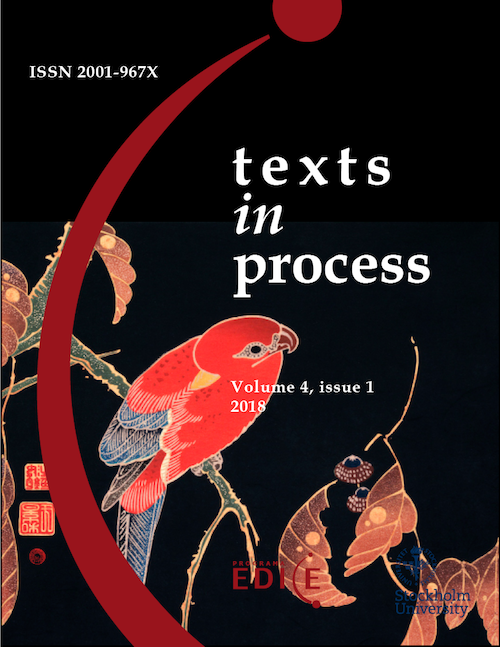No one is perfect: a dimensional discursive semantic analysis of Rufo Caballero’s film critique
Abstract
Criticizing cinema has always been a historical temptation and not exactly the most encouraging one. Misunderstood by some, admired by others; Rufo Caballero's atypical and controversial opinion speech goes beyond the scope of a strictly academic film critique. The object of study of the following work is the critical evaluating subject of cinema as the modal ilocutive actant of the evaluative speech acts in the discourse on cinematographic criticism. Dimensional analysis has been used as a fundamental methodology to study the content of the value meaning of utterances and their constituents: speech acts. It is based on the semantic value analysis model developed by the group of Semantic and Semiotic Studies of the Foreign Language School of the University of Havana. In particular, this discourse of the evaluating subject Rufo Caballero unfolded as a critical film illocutionary agent is characterized by positive, ambiguous and negative axiological positions always framed in the aesthetic domain. The critical ilocutive subject is modeled in consonance with its functions, generally of aesthetic appreciation, from the relation with the focalized objects: the film, the performance, the dramaturgy, the styles of the filmmakers and also their assumed attitude as a critic.
Downloads
References
Adam, Jean Michel (1990). Éléments de linguistique textuelle. Liège: Pierre Mardaga éd.
Austin, J. L. (1962). How to Do Things with Words. London: Oxford University Press.
Ayala, I. M. (2004). La caracterización del discurso de los personajes femeninos en cuentos de Alice Walker. (Tesis doctoral). Universidad de La Habana, La Habana.
Caballero Díaz, L. (1989). Introducción al estudio semántico e ideográfico de la valoración en el español en Cuba. Dos aproximaciones al español de Cuba. Universidad de La Habana, 27-88.
Caballero Díaz, L. (1996). Ilocuciones Valorativas. El Verbo Español. Separata Gerd Wotjiak (Ed.) Berlin/Madrid: Vervuert - Iberoamericana.
Caballero Díaz, L. Semiótica y Diccionario. (Inédito).
Caballero Díaz, L. (2002). Modalidades semánticas del lenguaje. Estudios lingüísticos cubanos (II). Homenaje a Leandro Caballero Díaz (137-160). Valencia: Universitat de València.
Caballero Díaz, L. (2014). Semántica y Diccionario. La Habana: Editorial Ciencias Sociales.
Caballero Díaz, L. y Curbeira, A. (2003). Las categorías semánticas de la modalidad. En Mayra del Águila Muñiz (Ed.), Lecturas de Semántica I (pp. 117-125). La Habana: Editorial Félix Varela.
Caballero, Rufo (2010). Nadie es perfecto. Crítica de cine. La Habana: Editorial Arte y Literatura. Ediciones ICAIC.
Chomsky, N. (1965). Aspects of the theory of Syntax. Cambridge, Ma: MIT Press
Correoso Bouly, M. (2003). La descripción del campo léxico de la valoración evaluativa con fines ideográficos (en adjetivos de la lengua inglesa). (Tesis doctoral). Universidad de La Habana, La Habana.
Curbeira Cancela, A. (2007). Introducción a la Teoría del lenguaje. La Habana: Editorial Félix Varela.
Dijk, T. A. van (1997). The Study of Discourse. Discourse as Structure and Process, London: SAGE.
Dijk, T. A. van (2008). Discourse and Context. A Sociocognitive Approach. New York: Cambridge University Press. https://doi.org/10.1017/CBO9780511481499
Dossier Homenaje a Rufo Caballero. (enero de 2011). Revista Cine Cubano online, (20). Recuperado de
http://www.cubacine.cult.cu/revistacinecubano/digital20/articulo17.htm
[Última consulta: 24/11/2017].
Ducrot, Oswald. (1986). El decir y lo dicho, trad. Irene Argoff. Barcelona: Ediciones Paidós.
Galbán Pozo, A. M. (2003). Aproximación al estudio de las categorías semánticas modales (valoración, lealtad, certidumbre, interés, afectividad y expresividad) y su expresión a través de verbos de las lenguas españolas y alemanas. (Tesis doctoral). Universidad de La Habana, La Habana.
González, H. M. (2017). La resemantización mítica en el discurso narrativo de una representación de Los Novísimos (1993-2003). (Tesis doctoral). Universidad de La Habana, La Habana.
Greimas, Algirdas J. (1971). Semántica estructural: investigación metodológica. Madrid: Gredos.
Halliday, M. A. K. (1994). An Introduction to Functional Grammar (2da. Ed.). London: Edward Arnold.
Iedema, R., Feez, S. y White, P. (1994). Media literacy. Sydney: Disadvantaged Schools Program, NSW Departament of School Education.
Kaplan, Nora. (2004). Nuevos desarrollos en el estudio de la evaluación en el lenguaje: La teoría de la valoración. Boletín de Lingüística, (22), 52-78.
Losada, G. M. (2003). Discurso y dimensión referencial:el análisis semántico discursivo dimensional. (Tesis doctoral). La Habana: Universidad de La Habana.
Losada, G. M. (2011). La máscara del lenguaje. Intencionalidad y sentido. La Habana: Editorial Ciencias Sociales.
Losada, G. M. (2015). Entre la mente y el lenguaje. El árbol de carne. La Habana: Editorial UH.
Maingueneau, Dominique. (1996). Términos claves del análisis del discurso. Buenos Aires: Ediciones Nueva Visión.
Martin, J. R. (1995a). Interpersonal meaning, persuasion, and public discourse: Packing semiotic punch. Australian Journal of Linguistics, 15, 3-67.
https://doi.org/10.1080/07268609508599515
Martin, J. R. (1995b). Reading positions/positioning readers: JUDGEMENT in English. Prospect: a Journal of Australian TESOL, 10 (2), 27-37.
Martin, J. R. (1997). Analysing genre: Functional parameters. En F. Christie y J. R. Martin (Eds.). Genres and institutions: Social processes in the workplace and school (pp. 3-
. London: Cassell.
Martin, J. R. (2000). Beyond exchange: APPRAISAL systems in English. En S. Hunston y G. Thompson (Eds.). Evaluation in text: Authorial stance and the construction of discourse, (pp. 142-175). Oxford: Oxford University Press.
Otaola Olano, Concepción (1989). El análisis del discurso. Introducción teórica. En Epos: Revista de Filología, n. 5, 81-98. Recuperado de:
http://62.204.194.45:8080/fedora/get/bibliuned%3AEpos1989 [Última consulta: 24/11/2017].
Pérez Turrent, Tomás (1981). La crítica diaria. Cine cubano, (99), 18-23.
Picart, Gina (2016, mayo). Memorial para Rufo Caballero [Blog Hija del aire]. Recuperado de: https://ginapicart.wordpress.com/2016/05/15/memorial-para-rufo-caballero
[Última consulta: 24/11/2017].
Santovenia, Rodolfo (2006). Diccionario de cine cubano. La Habana: Editorial Arte y Literatura.
Searle, John (1980). Actos de habla. Madrid: Cátedra.
Ventola, E. (1987). The structure of social interaction: A systemic approach to the semiotics of
service encounters. London: Frances Pinter.
White, P.R. (1998). Telling media tales: The news story as rhetoric. Tesis de Doctorado sin publicar. Sidney: University of Sidney.
White, P. R. (2000). Dialogue and inter-subjectivity: Reinterpreting the semantics of modality and hedging. En M. Coulthard, J. Cotterill y F. Rock (Eds.). Dialogue analysis VII: Working with dialogue. Selected papers from the 7th International Association of Dialogue Analysis Conference Birmingham (1999) (pp. 67-80). Tübingen: Niemeyer.
White, P.R. (2002). Appraisal: The language of evaluation and stance. En J. Verschueren, J-O. Östman, J. Blommaert y C. Bulcaen (Eds.). The Handbook of Pragmatics (pp. 1-23). Amsterdam/Philadelphia: John Benjamins.
White, P. (2003). Beyond modality and hedging: A dialogic view of the language of intersubjective stance. Text, 23(2), 259-284 [Special issue].
https://doi.org/10.1515/text.2003.011
White, P. (2004). [En línea]. The Appraisal website: The language of attitude, arguability and interpersonal positioning. Recuperado de:
http://www.grammatics.com/appraisal/index.html [Última consulta: 24/11/2017].

Copyright (c) 2018 Yamila Cobos Castillo

This work is licensed under a Creative Commons Attribution 4.0 International License.
Texts in Process (TEP) is a non-commercial open-access scholarly journal governed by a Creative Commons Recognition 4.0 International license. It follows a full and unrestricted open access, without charges or fees for shipping, reviewing, processing and publishing articles. Users can read, download without registering, distribute, print or link the complete texts of numbers and articles, without the permission of the editors or authors. There is also no charge to publish (APCs), being applicable to the entire editorial process. The authors retain their intellectual rights at all times.
ASICE-EDICE Programme has always believed that non-commercial, open, unlimited and unrestricted access to specialized academic publications is a vehicle for academic freedom and scientific rigor. It adheres and shares the Declaration of Mexico and DORA to guarantee the protection of academic and scientific production in Open Access.
















